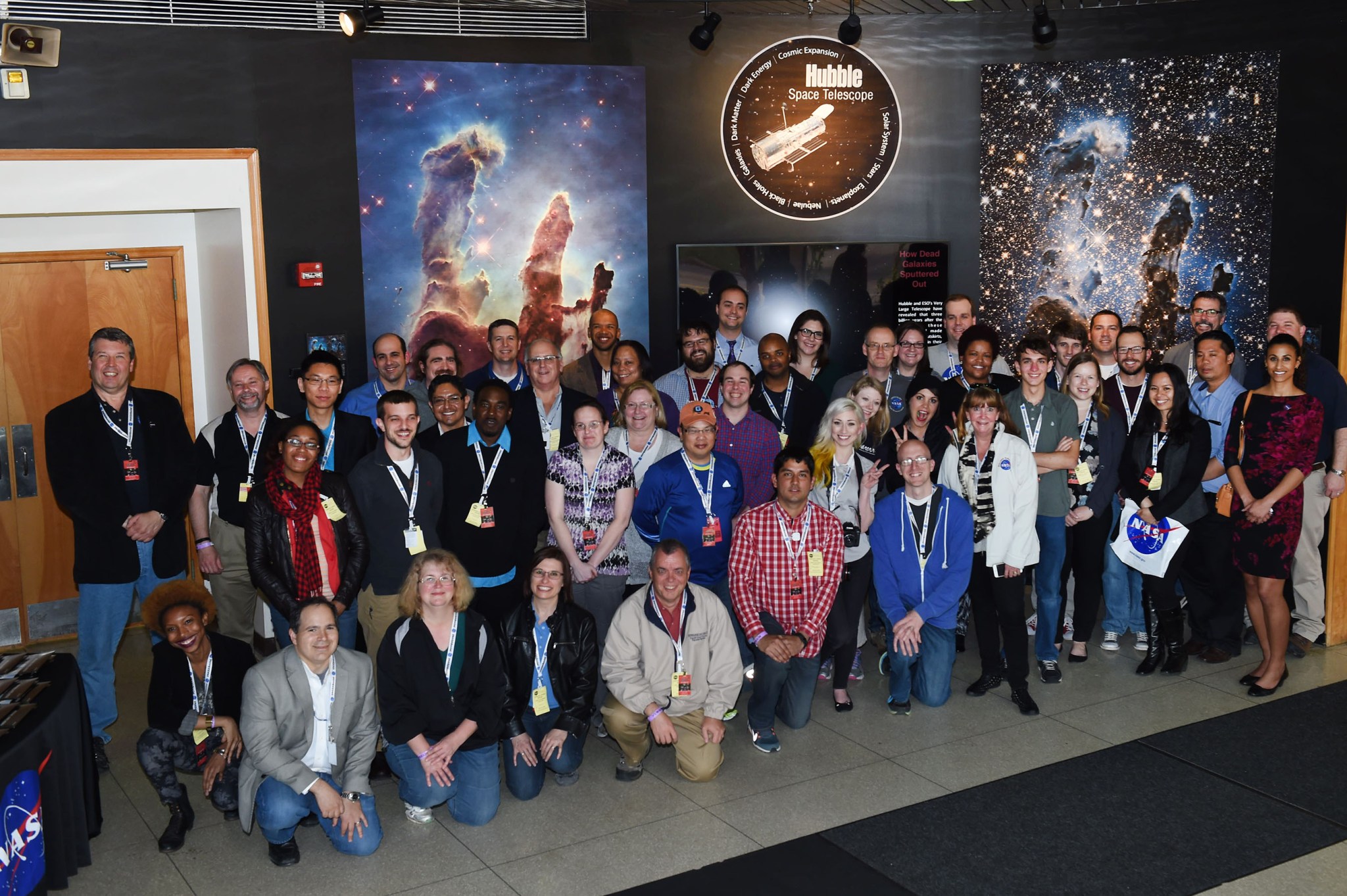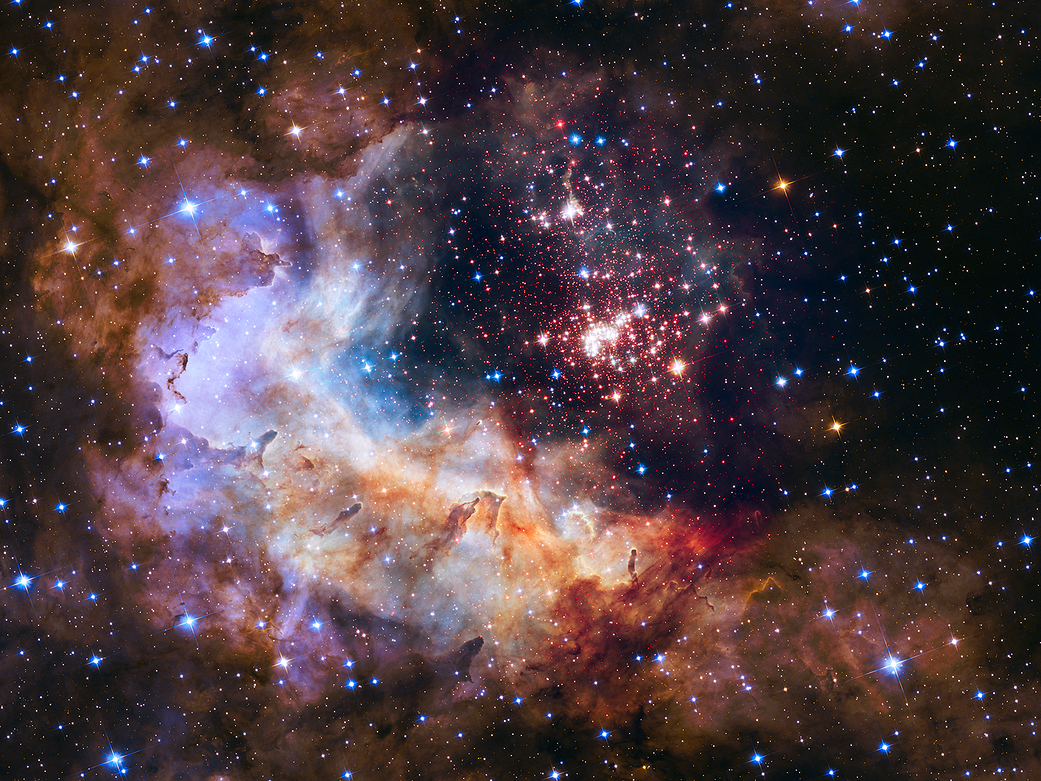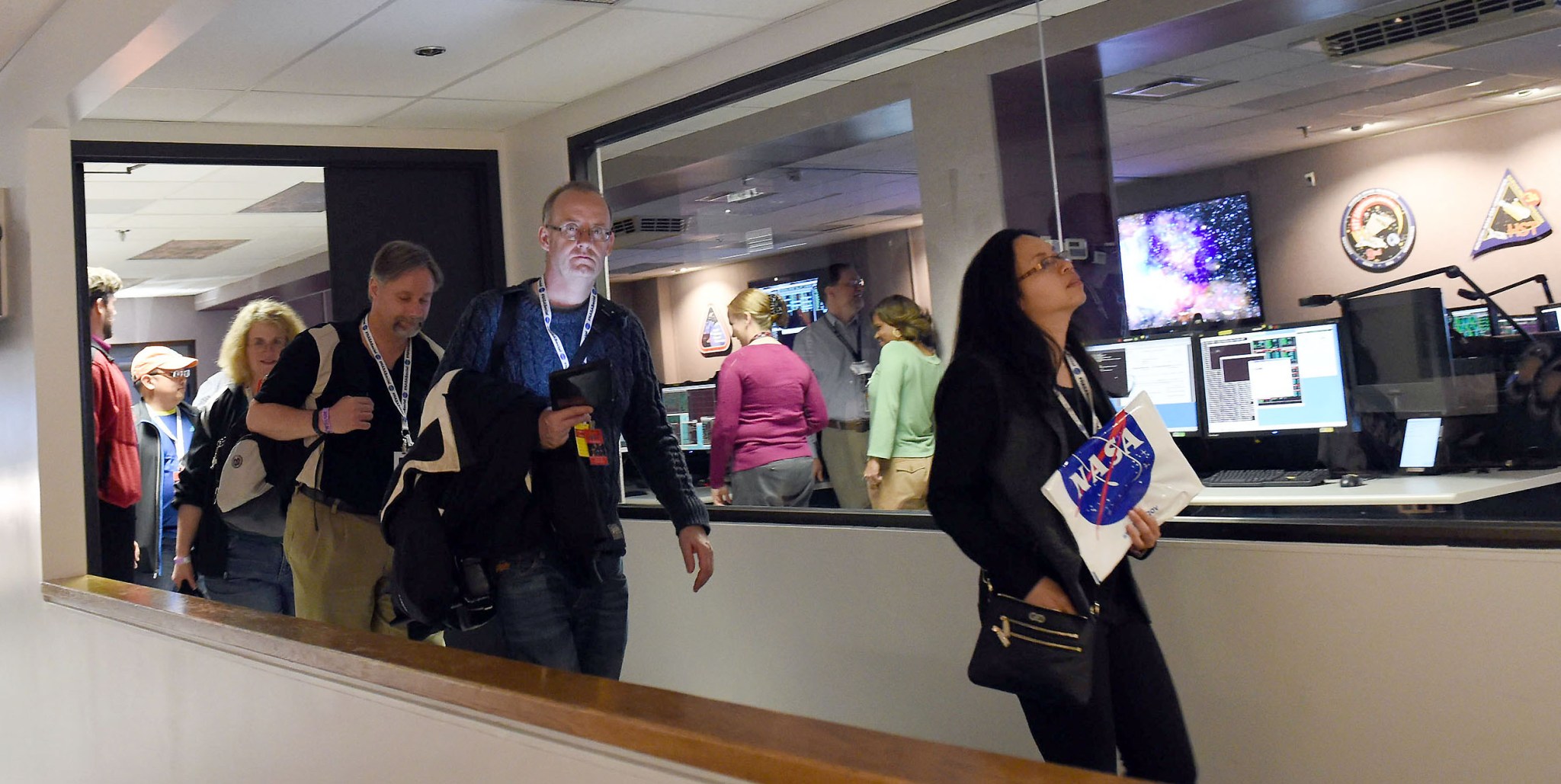Twenty-five years ago on April 24, 1990, the Hubble Space Telescope launched from NASA’s Kennedy Space Center, Florida, aboard the space shuttle Discovery and entered low-Earth orbit. Over a quarter-century, Hubble transformed our understanding of the universe and how we see it.
NASA’s Goddard Space Flight Center in Greenbelt, Maryland, led the development of Hubble’s scientific instruments and is home to the telescope’s operations control center. Ask almost any employee and they can tell you what role they played in the mission over the years.
Its legacy and anniversary calls for celebration. Here’s how NASA celebrates one of its most iconic mission anniversaries – April 24, 2015.

HUBBLE SOCIAL
Hubble’s 25th anniversary celebration kicked into high gear with an all-day Hubble-themed NASA Social on Thursday. More than 40 social media and media representatives attended the event. The day commenced and concluded at the Newseum in Washington, D.C., and included a trip up the parkway for a tour of Goddard.
Along the way they met and talked to NASA leaders involved in the planning, construction and servicing of Hubble, including scientists, engineers and astronauts who repaired the observatory in orbit.
“All things considered, I think it’s fair to say that Hubble is one of the most influential and important scientific instruments and achievements ever devised,” NASA Administrator Charles Bolden said. “With two-and-a-half decades of historic trail-blazing science already accomplished, we’ve come to realize and expect that there is still much more out there to discover.”
During the press conference, Bolden and John Grunsfeld, NASA’s associate administrator for the Science Mission Directorate unveiled the official Hubble anniversary image. Described as celestial fireworks, the image shows a group of young stars flaring 20,000 light-years from Earth.

“Hubble has shown us where we’ve come from and, remarkably, it has now told us where we’re going, and it’s not what we expected,” Grunsfeld said. “The universe is expanding. We expected it to be slowing down, but in fact, it’s speeding up – it’s accelerating.”
After the press conference and exploring the Newseum, guests boarded a bus for Goddard. Upon arriving, the group toured Goddard’s Visitor Center before proceeding through the center’s gates to learn more about various facilities and current missions.

The afternoon at Goddard highlighted satellite testing and integration facilities where much of Hubble was built and tested, as well as the ongoing construction of Hubble’s scientific successor, the James Webb Space Telescope. Visitors also saw the operations control center where technicians monitor the Hubble’s operations from day to day.
“One thing that Hubble has revealed to us all along is that our universe is active, it’s not stagnant,” Senior Scientist for Hubble Space Telescope Jennifer Wiseman said.
Attendees also got to hold and take pictures of various tools used during servicing missions and pose for pictures with Goddard’s replica model of Hubble.
At the end of the day, attendees shared their enthusiasm about Hubble and gratitude for the unique experience.
Thank you to all @NASAGoddard for generously and enthusiastically giving me a #Hubble25 day to remember. It was truly awesome. #NASASocial
— Simon Wright (@Wrightbesideyou) April 24, 2015
Big thanks to @NASAGoddard for hosting a great #Hubble25 #NASASocial. I knew Hubble was awesome; didn’t know how great the precision was.
— Erin Allen (@Erin_Allen) April 23, 2015
For pictures from the Hubble-themed NASA Social visit Goddard’s Flickr: www.flickr.com/photos/nasa_goddard/sets/72157652091557886/
THE JOHN BAHCALL LECTURE
Goddard and the Space Telescope Science Institute in Baltimore started the John Bahcall lecture series in 2006 to honor the late professor and astrophysicist. Bahcall was a part of the Hubble project since inception in 1973 and was the principal investigator for many Hubble projects.
Robert Kirshner, Clowes professor of science at Harvard University, is the ninth lecturer in the Bahcall series. Kirshner discussed Hubble and the extravagant universe at Goddard on April 24. He gave a similar public talk two days earlier, on April 22, at the National Air and Space Museum in Washington, D.C.
“We’re not smarter than Einstein or Hubble, but we have much better data!” said Kirshner in his book, “The Extravagant Universe: Exploding Stars, Dark Energy and the Accelerating Cosmos.”
In 1929, Edwin Hubble measured the distances and motions of galaxies and concluded the universe is expanding. Instead of observing galaxies, Kirshner and his team used Hubble telescope data to observe supernovae exploding billions of years back in time. They showed the universe is accelerating as it expands.
“The Hubble Space Telescope made a decisive contribution to understanding the expansion of the universe,” said Kirshner. Hubble data also showed the universe was once decelerating before accelerating as it is now.
“It is important to do some science for the joy of finding out how the world works,” said Kirshner.
LIVE SHOTS
To share and celebrate Hubble’s anniversary with a broader audience, Goddard’s Office of Communications developed a multimedia campaign in concert with network news programs, referred to as a live shot.
Goddard’s Live Shot Producer, Michelle Handleman, organized satellite interviews with broadcasters and meteorologists from more than 30 television, radio and online news outlets worldwide. Media interviewed Hubble scientists throughout the morning and afternoon on April 24.
NASA scientists Mark Clampin, Padi Boyd, Jane Rigby, Jennifer Wiseman and Kate Whitaker spoke one-on-one with news anchors and morning show hosts via satellite. Susana Deustua interviewed in Spanish, and Rafael Eufrasio interviewed in Portuguese.
Interviewees emphasized Hubble’s accomplishments involving mission operations, astronomy research and societal achievements. The scientists discussed Hubble’s most surprising discoveries and highlighted obstacles the mission overcame thanks in part to five servicing missions.
“Hubble has told us that most galaxies have a black hole at the center. With the Hubble Ultra Deep Field we can see back until about one-billion years before the big bang,” said Clampin.
Broadcasters asked about the future of space telescopes and the prospects of the Webb Telescope.
“We are designing and building a new telescope to do what Hubble can’t do. The goal with the Webb Telescope is to see the first generation of stars and galaxies that formed after the big bang,” said Rigby.
While Hubble’s mirrors are not large enough to observe these events, the telescope’s future, even without servicing, remains promising. NASA leaders and scientists expect Hubble will continue to send data for another five years. This 2020 goal would allow Hubble and the Webb Telescope to overlap for at least two years.
To see incredible Hubble images visit: https://www.nasa.gov/hubble
NASM EVENING AWARDS CEREMONY
On April 24 at 8 p.m. EDT, NASA TV will live broadcast Hubble TED-like talks and award ceremony from the Smithsonian’s National Air and Space Museum. Keynote speakers will focus on Hubble’s launch and servicing missions as well as Hubble’s astonishing scientific achievements and how the mission vastly influenced culture worldwide.
Watch the ceremony via NASA TV live stream: www.nasa.gov/multimedia/nasatv/
HUBBLE FAMILY DAY
Finally, the public is welcome to help celebrate Hubble’s anniversary from 10 a.m. to 3 p.m. on April 25 at the National Air and Space Museum’s Steven F. Udvar-Hazy Center in Chantilly, Virginia. Learn about Hubble’s quarter-century of discovery and impact with presentations from NASA astronauts and more. The free event is appropriate for all ages.
For more information about Hubble Family Day: http://hubble25th.org/news/32

























